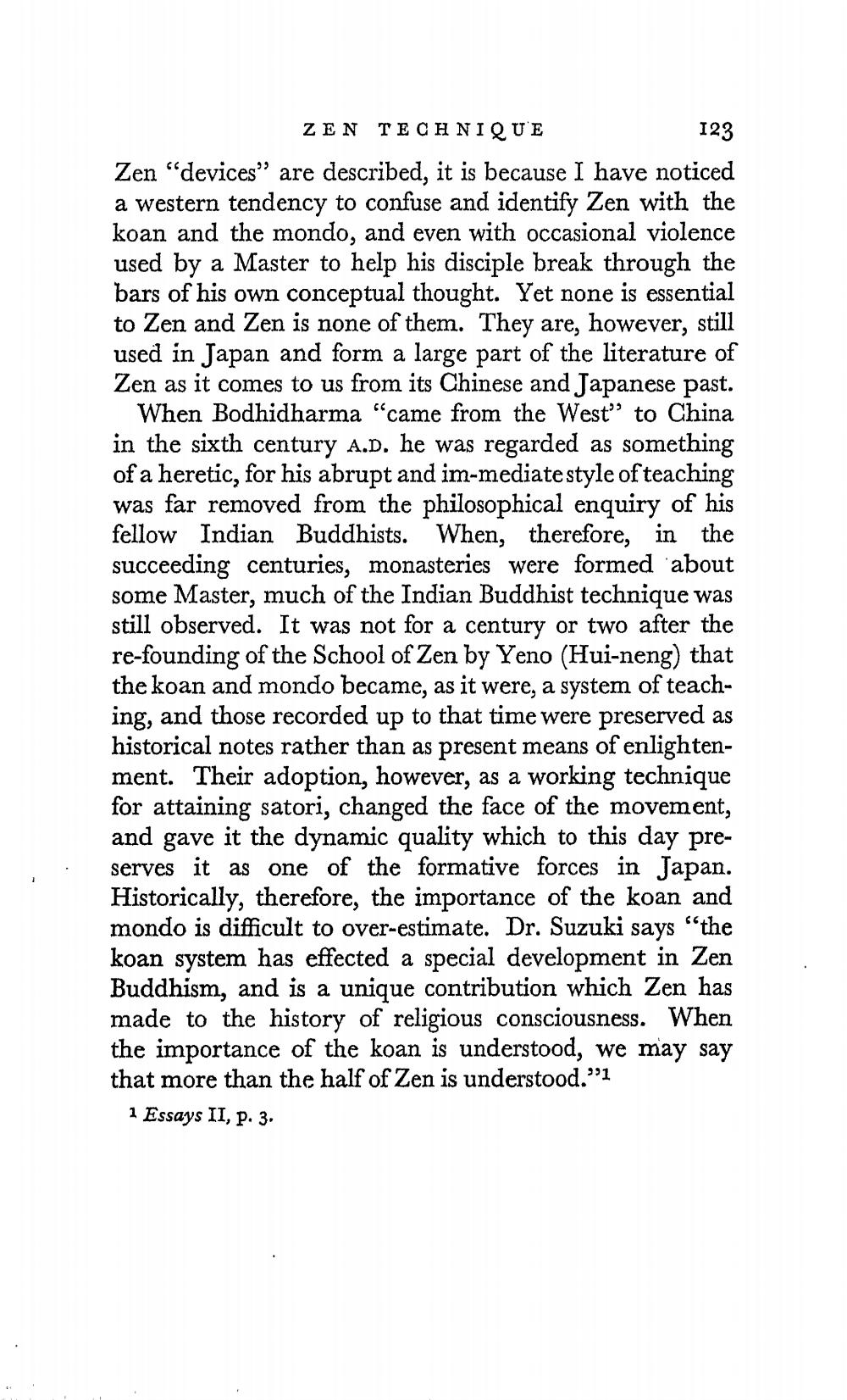________________
ZEN TECHNIQUE
123 Zen "devices are described, it is because I have noticed a western tendency to confuse and identify Zen with the koan and the mondo, and even with occasional violence used by a Master to help his disciple break through the bars of his own conceptual thought. Yet none is essential to Zen and Zen is none of them. They are, however, still used in Japan and form a large part of the literature of Zen as it comes to us from its Chinese and Japanese past.
When Bodhidharma "came from the West” to China in the sixth century A.D. he was regarded as something of a heretic, for his abrupt and im-mediate style of teaching was far removed from the philosophical enquiry of his fellow Indian Buddhists. When, therefore, in the succeeding centuries, monasteries were formed about some Master, much of the Indian Buddhist technique was still observed. It was not for a century or two after the re-founding of the School of Zen by Yeno (Hui-neng) that the koan and mondo became, as it were, a system of teaching, and those recorded up to that time were preserved as historical notes rather than as present means of enlightenment. Their adoption, however, as a working technique for attaining satori, changed the face of the movement, and gave it the dynamic quality which to this day preserves it as one of the formative forces in Japan. Historically, therefore, the importance of the koan and mondo is difficult to over-estimate. Dr. Suzuki says "the koan system has effected a special development in Zen Buddhism, and is a unique contribution which Zen has made to the history of religious consciousness. When the importance of the koan is understood, we may say that more than the half of Zen is understood."1 1 Essays II, p. 3.




